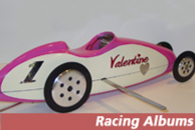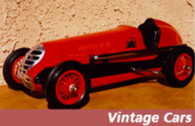

200MPH!
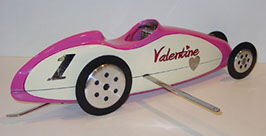
"Valentine" - a modern custom tether car.
200 MPH! Model cars powered by .60 cubic inch (10cc) size engines turning 30,000 RPM!
Tether car racing is one of the least known, but most spectacular modeling hobbies. The cars run without radio control on a smooth concrete circular track held by a cable 33 ½ feet (10 meters) long. The car and metal cable are attached to a steel post in the center of the track. At top speed, the cars are nearly invisible to the naked eye. They complete a lap around the track, (over 200 feet), in less than one second! With engines turning 30,000 RPM, they sound awesome as they pour out horsepower.
Meets are conducted as time trials as where cars compete one at a time. Competitions are held at local, national and international levels. There are several different classes of cars. Classes are regulated by engine displacement, model size and weight, etc.
History: The hobby started in Los Angeles the late 1930’s. In the early days, the model cars looked the like full size racers of the time. On average, the cars weighed 5 pounds, were 16 inches long and ran about 60 MPH.
Tether car development over the years.
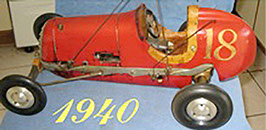
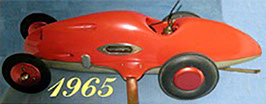
In the late 1940s, speeds jumped to 100 MPH and then a screaming 150 MPH by the 1950s as the engines improved and the car designs and engineering became more sophisticated. By the 1970’s certain model cars began to look less like the full size cars due to streamline engineering. Today the fastest models top 200 MPH as they incorporate ground effects, narrow chassis design and run with enclosed wheels. Not surprisingly, these fastest cars look like the streamlined motorcycles that run at Bonneville.`

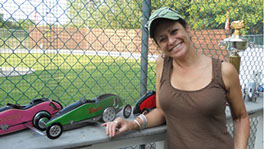
Today there is renewed interest in the vintage open
wheel cars.
Many modelers don’t feel right unless they have a radio control transmitter in their hands to control the plane, boat or car. This is not the case with these models. Impossibly fast, they must use the tether cable for control. Tether Car racers get satisfaction in the design, engineering and building of the model. Their efforts are proven out on the track in testing and competition. Hours are spent to improve each component. Attention given to reducing friction at every moving point, fine tuning the suspension and getting more horsepower from the engine.

A modern day Streamliner with enclosed wheels.

So how do you start these cars?
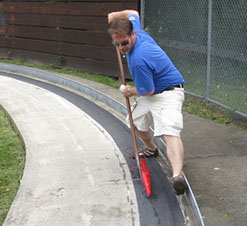
You give them a mighty push!
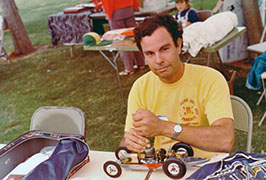
If you take the top off a car you see a lot of machinery, but you will only find those pieces necessary for maximum speed. You have the front wheels either inside the body or out, followed by the fuel tank and the only control on the car: a fuel shut off that is activated by holding a broom over the car to trip it. The fuel is methyl alcohol with castor oil as a lubricant. Nitro fuel is allowed in some classes.
The heart of the car is the engine and gear box. These are machined often by the racer himself to very precise tolerances. The tuned pipe provides a large boost in power and must be carefully adjusted during test runs.
With the inside as good as the racer can make it, he then becomes interested in the aerodynamics of the car.
If you are interested in racing or just watching, come by one of the three tracks in the US. On the west coast there is a track at The Whittier Narrows Recreation Park in South El Monte, California. The Midwest track is at Anderson, Indiana about 35 miles from the Indianapolis Motor Speedway. The east coast track is in Cedar Creek Park in Seaford, Long Island, New York about 35 miles from downtown Manhattan.
Ted Maciag.

